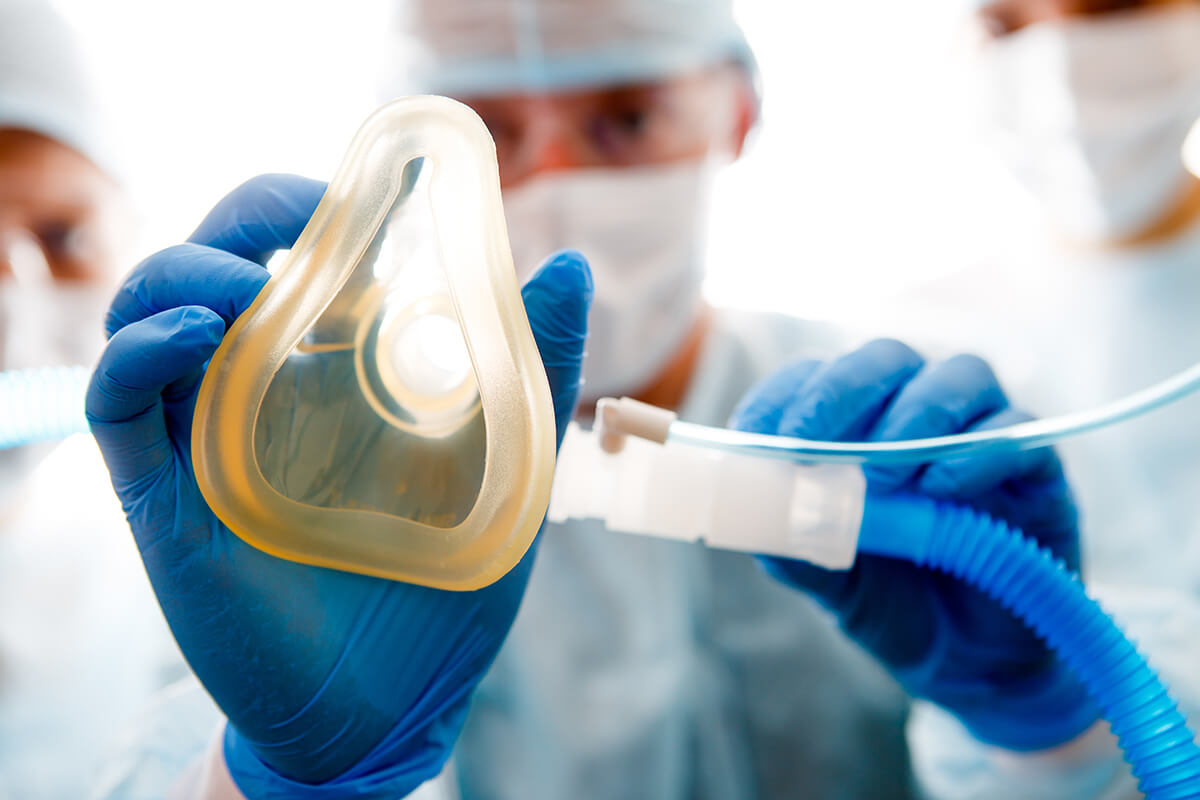

Skilled anesthesia is required in ENT surgery as both the surgeon and the anesthetist often share the same operative field and airway. ENT surgery has a variety of major and minor surgeries including laser and endoscopic surgeries performed under both local anesthesia with sedation (MAC- Monitored anesthesia care), general anesthesia (with endotracheal intubation or LMA- Laryngeal mask airway) and TIVA (Total intravenous anesthesia).
Prior to local anesthesia a sensitivity test needs to be done. Over sedation should be avoided to maintain the pharyngo-laryngeal reflex to prevent any aspiration. Local Anesthesia is commonly used for: a) Mastoidectomy. b) Facial nerve decompression. c) Endolymphatic sac decompression. d) Tympanoplasty in uncooperative patients. e) Stapedotomy. f) Lateral skull base surgery. 1) Nasal polypectomy.
Rhinoplasty. 1)Excision of nasopharyngeal angiofibroma. 2)Rhinolith. 3)Rhinosporidiosis. 4)FESS (Functional Endoscopic Sinus Surgery) and its extended approaches. 5)Anterior skull base surgery. 1) Tonsillo-adenoidectomy. 2) Palatal surgeries. 3) Laryngectomy. 4) Microlaryngoscopy. 5) Thyroidectomies. 6) Radical neck dissection. 1)Bronchoscopy. 2)Oesophagoscopy. 3)Direct laryngoscopy. 4)Functional Endoscopic Sinus Surgery (FESS). Prior pre anesthetic checkup done and consent taken. Premedication: Anti-sialagouges/ anti-anxiety/ analgesics/ vagolytics and sedatives are given. 1) Inj Midazolam 0.25 mg/kg body weight is given as sedation.
2) Inj Fentanyl 1-2 ug/kg body weight as analgesia. 3) Inj Atropine 0.02 mg/kg or injection Glycopyrrolate 0.004 mg/kg is given as antisialagogue and vagolytic. 4) Induction of anesthesia is done by injection Thiopentone 5mg/kg or Propofol (1-2 md/kg). 5) Endotracheal intubation done with depolarizing muscle relaxant (Scoline 1-2 mg/kg) or non-depolarizing muscle relaxant (Atracurium 0.5 mg/kg) 6) Intra-operative patient is maintained on nitrous oxide, oxygen and inhalational anesthetics like Sevoflurane and Isoflurane and non-depolarising muscle relaxant like Atracurium or Vecuronium with constant monitoring. 7) Reversal of patient from anesthesia is done by injection Myopyrolate (Neostigmine 0.05 mg/kg + Glycopyrrolate 0.004mg/kg). 8) Extubation done only after complete recovery of all oropharyngeal, laryngeal reflexes and patient is responding to verbal commands. 9) To reduce bleeding and provide a clear operating field as in ear surgeries (under microscope), Septorhinoplasty and FESS; hypotensive anesthesia with a controlled pulse rate is required. Drugs used are a) Antihypertensive drugs like Nitroglycerine, Beta blockers like Metoprolol, Labetalol, Esmolol and alpha agonist like Clonidine. b) Dexmeditomedine and Propofol as continuous infusion. c) Inhalational anesthetics like Isoflurane and Sevoflurane. 1)Ear surgery: Since ear surgeries are under microscopic vision, minimal bleeding may hamper the operative field. Hypotensive anesthesia with controlled pulse rate and blood pressure is done as mentioned above. 2)Endoscopic nasal surgery: 3) Bronchoscopy: In rigid bronchoscopy the surgeon and the anesthetist share the same field. Hence, it is important to avoid hypercarbia and hypoxemia. Ventilation is done by Saunders jet injector based on venturi effect for the airway management. Nowadays, flexible fibreoptic bronchoscopy is done. 4) Laser surgery: Lasers used for the surgeries in larynx and oral cavity can damage the endotracheal tube by excessive heat generation and start a fire. a) Limited duration of the laser intensity. b) Inspired O2 concentration should be low by 21-30%. Nitrous oxide supports combustion and should be avoided. c) The endotracheal tube is wrapped by a thin aluminum foil to prevent damage by the laser beam. d) Saline soaked pledgets should be placed in the airway to reduce the thermal damage to surrounding structures. 5) Head and neck surgeries: Surgeries for malignancies like pharyngectomy, glossectomy, laryngectomy, parotidectomy have to be carried out with great care, with the aim of establishing and securing an airway. Elective tracheostomy can be done for high risk cases. Close monitoring for complications like bleeding, air embolism, arrhythmias should be done.
Local Anesthesia in ENT:
Techniques:
Major ENT surgeries are done under general anesthesia using a cuffed endotracheal tube with a throat pack. LMA (supraglottic airway devices) can be used except in oral and throat surgery.
Common surgeries performed under general anesthesia:
Ear:
Nose:
Throat:
Endoscopies:

Procedure:
Anesthesia in specific cases:
Apart from the routine anesthesia, the anesthetic precautions are:Book Your Appointment